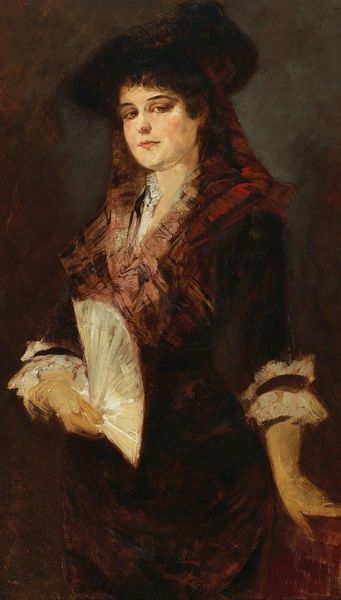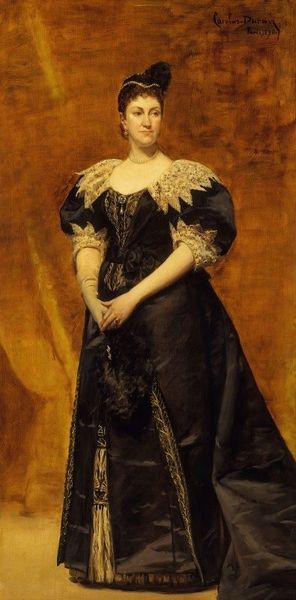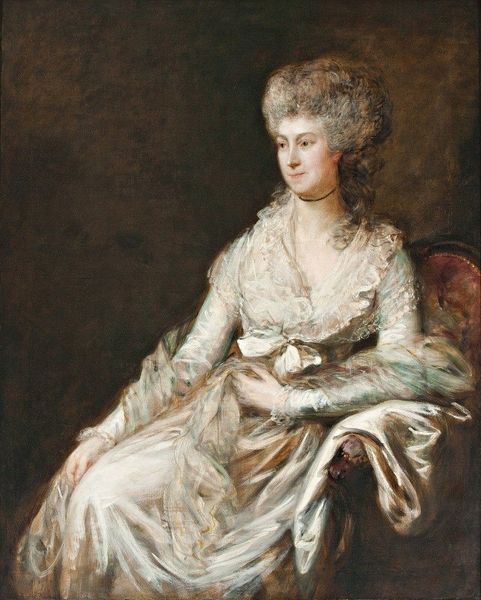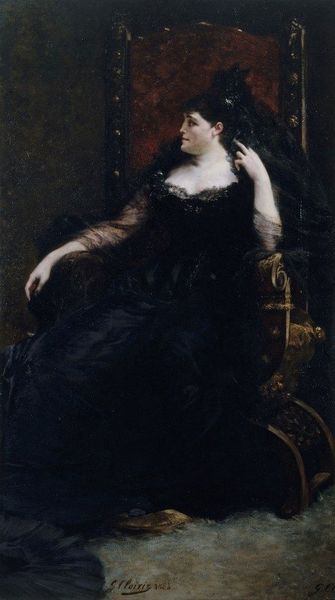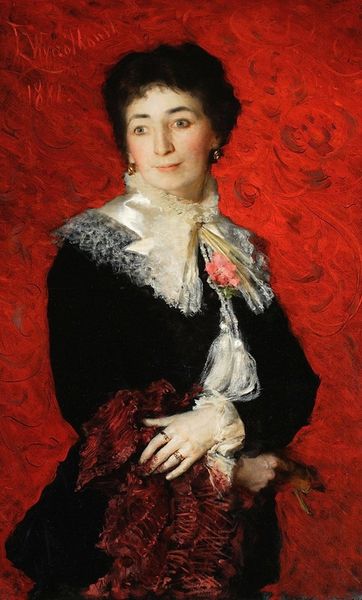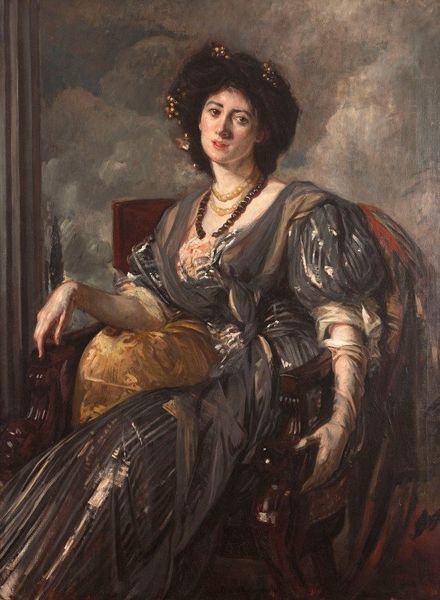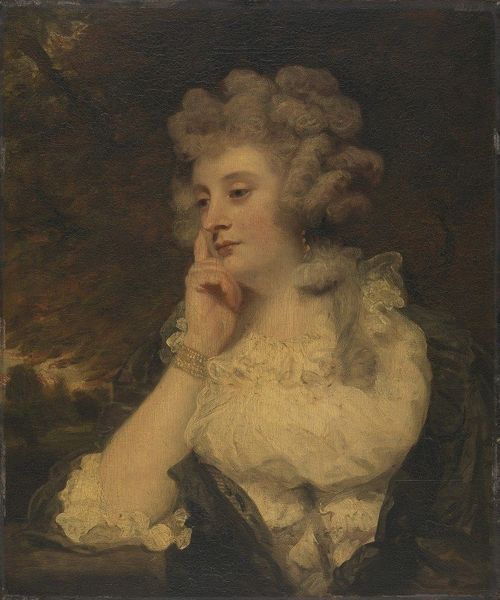
Copyright: Public Domain: Artvee
Curator: There's such a delicious theatricality to Hans Makart’s portrait of Hanna Klinkosch! Painted sometime before 1884, the opulent oil painting gives off a distinct… longing, I think. Editor: It’s the ruff collar and lace cuffs for me, giving those weavers all the overtime they could handle. Must have taken hours just to dress for a portrait session, not to mention the raw materials consumed to produce that textile. Curator: Absolutely, that labor and conspicuous consumption of resources are evident in the material presentation. Still, there's something about the subject's averted gaze, a world-weariness hinted at beneath the surface, that speaks volumes to me. I almost feel like I could write her life story based just on her eyes. Editor: Those 'thousand-yard stares' aren't just born, you know. Every ruffle, every pearl in that necklace is part of the industrial-capitalist complex. Klinkosch probably didn’t even get to choose what dress to wear – likely a calculation by someone keen to communicate status and access. Curator: Well, maybe… or maybe she enjoyed a sense of authorship of her appearance within a narrow bandwidth available to women in that society? The detail given to her jewelry and lace suggests she was actively complicit with constructing a visual identity, wouldn’t you say? Editor: Maybe. Still, the relentless pace of artistic creation can be wearying, and to assume women fully controlled the presentation of self back then is, historically speaking, inaccurate. But I appreciate the idea that art, regardless, opens possibilities to present subjectivity through creative media and forms of skilled labor. Curator: Indeed. And while she lived in a time of enormous class disparities, what intrigues me most is the almost melancholic whisper coming from beyond the gilt frame; what are her unfulfilled desires, or even suppressed frustrations? What price does one pay for security and station? Food for thought, eh? Editor: You’ve said it, curator, the material culture provides, whether intentionally or accidentally, a rich entry point for broader stories about the production, wealth, access, and social class dynamics within any work of art, which still resonates nowadays.
Comments
No comments
Be the first to comment and join the conversation on the ultimate creative platform.
